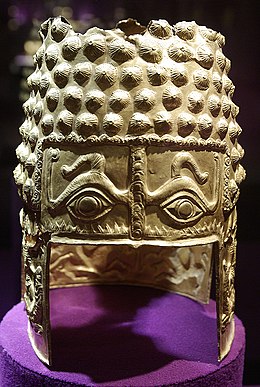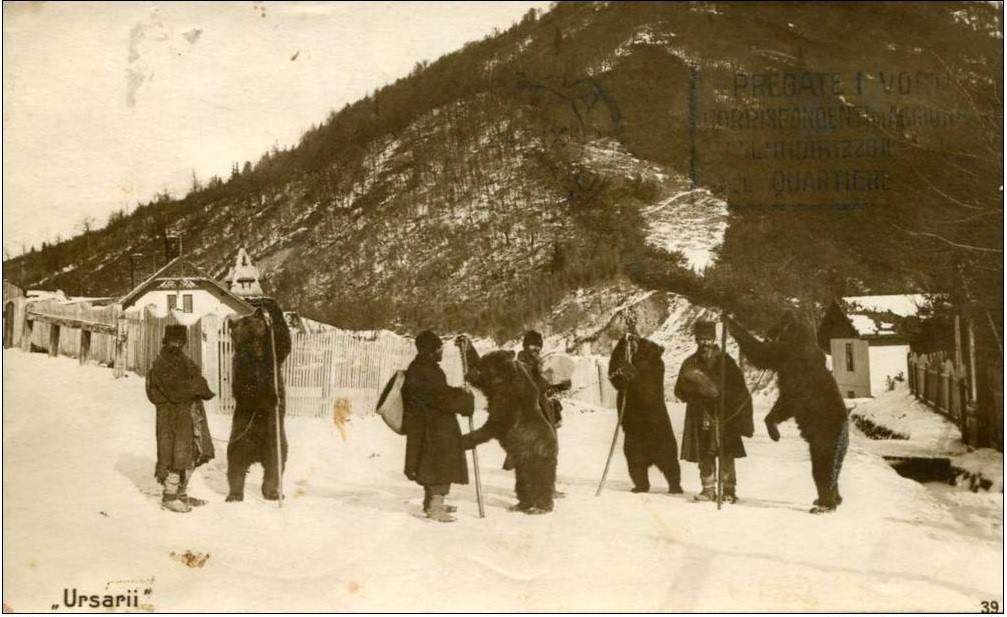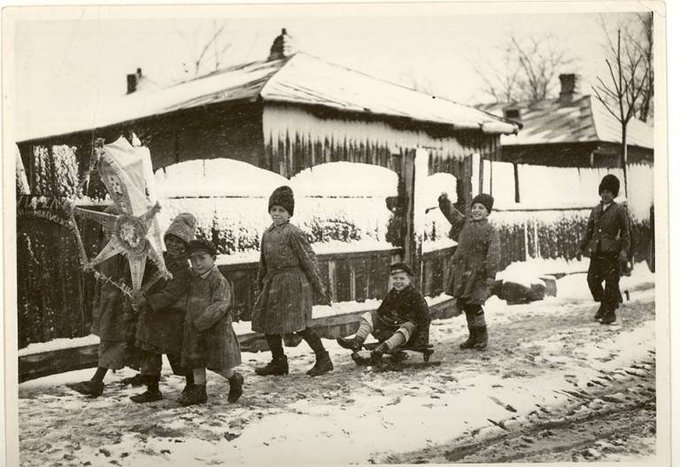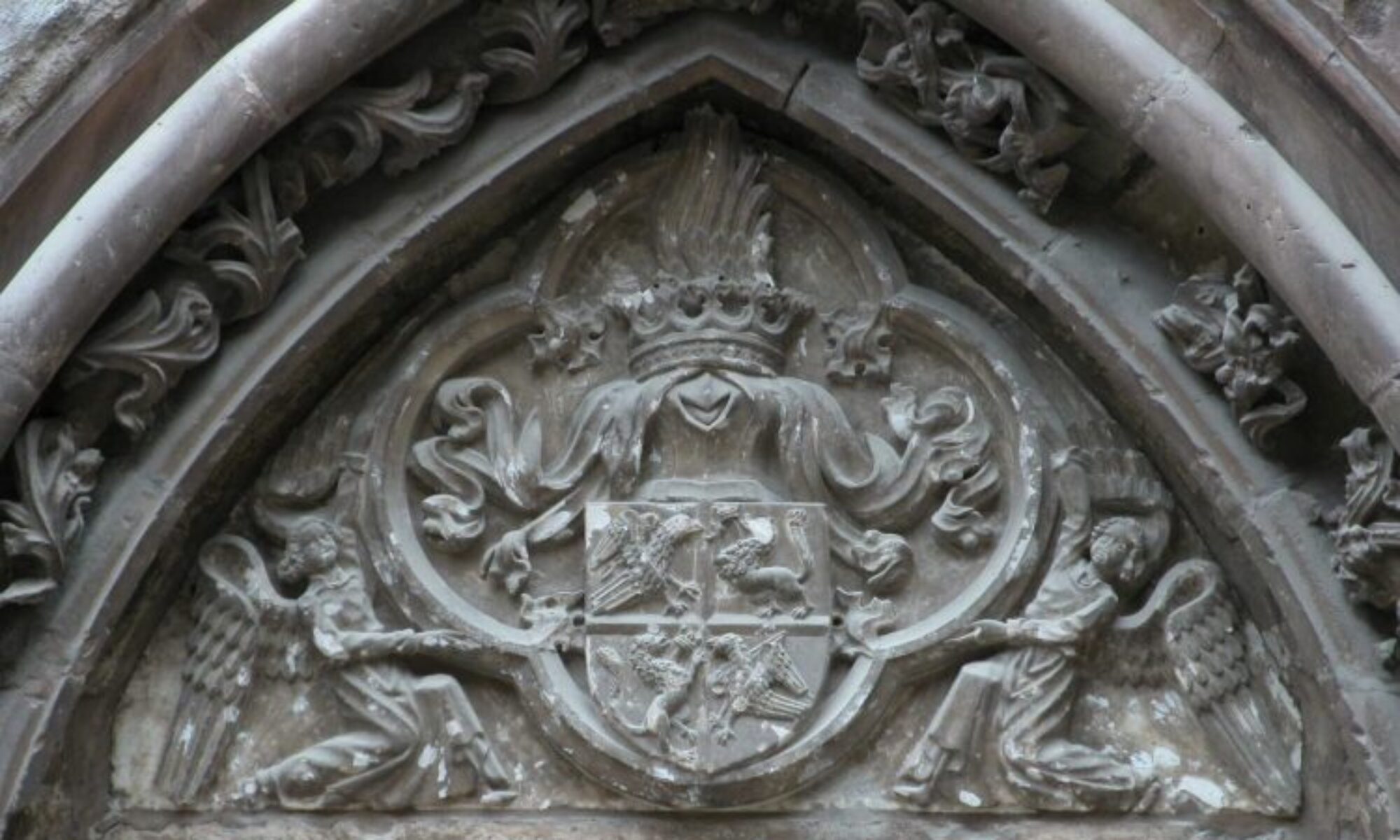As the world transits from the old to the new year I am remembered of the bear and its rejuvenation and of some lesser-known magical rites from Romania. Much like nutrients enrich the soil before the sun even warms the earth in spring, awakening beings from slumber, the hibernating bear symbolizing life in delicate equilibrium.
Rituals of Renewal: The Symbolic Death and Rebirth of the God Year
A funeral rite that symbolized the God Year’s symbolic death as the old year and its rebirth as the new year was observed many times over in the past.
From the first of January, the New Year would develop, mature, then become the ‘old man,’ it would die then rise again in an endless circle. Thus the first period, from St. Vasile (1st of January) and St. Basil’s Day to Epiphany was revitalized, bursting with power, grandeur, and victory, thanks to the carolers. While the days leading from the end of October and All Saints’ Day to Christmas was agonizing, chaotic, and foreboding, marked by the possibility of the return of the dead’s souls.
The four-century shift in the Savior’s Birth celebration from Epiphany to Christmas and the January 1st start date for the New Year resulted in the blending of traditions and a weakening of the distinction between the two periods of the festive time cycle (old/ominous – young/triumphant).
During the Middle Ages in Romania the financial year started on August 1st, the agricultural year naturally began in March, and the ecclesiastical year, as declared by the princely chancellery, began on September 1st. But the Roman calendar tradition endured, as seen in the neighboring Catholic nations where January 1st marked the start of the civil year.
The New Year and the Bear
In Greek and Roman cultures the bear was associated with the huntress Goddesses, Diana and Artemis. Bears represented resurrection, embodying a profound metaphor for life’s cycles, for renewal, and growth emerging from what appeared dormant. Much like the New Year emerges from a dying old one.
The bear teaches the balance of opposing viewpoints, demonstrating the ability to be fierce and compassionate at the same time, if we only think of the mamma-bear. In mythology, the bear’s duality represents an instinctive balance, demonstrating the ability to control one’s emotional life. Moving through cycles, from alertness to embracing quiet hibernation for renewed energy are all bearish powers.
The bear symbol teaches that it is possible to be both protective and generous, to set boundaries while remaining approachable. The bear’s mythic rhythm emphasizes the importance of stillness, reflection, and it speaks to me, as a writer, of the cyclical nature of the creative process, of its introspection that challenges the social emphasis on constant action and public expression.
New Year Traditions, Bear Power, and God Sun
The oldest traditions related to the start of the year are propitiatory rites, apotropaic rituals (which ward off evil), and magical divination techniques. In Romania, the ‘plugușorul’ singing tradition and the masked carolers are both remnants of a bygone era.

In the past, when the church bell rang on the last day of the year at midnight in the Romanian Lands, villagers would emerge from their houses and would shoot their weapons to make noise and drive away the old year’s bad spirits, so they wouldn’t steal the New Year, or linger around it.
At Christmas and New Year, the Goat Dance (stag or ewe) symbolizes nature’s death during winter & its renewal in coming spring. Just like the bear, the goat dies & returns to life in its dance. Its vibrant colors are a reminder of joyful spring.
On New Year’s Eve in Romania a sleuth of bears parades and dances on the main road. Accompanied by drummers, pan flutes musicians, whistles blowers, commanded by a bear tamer. The Bear Dance brings a fertile, lucky New Year to the villagers while the old year fades, taking its ailments along.

The young people will carol with “plugusorul,” a tiny plough. This carol validates the symbolic commemoration of the sun as a god.
The sun gods, such as Vishnu and Osiris, were associated with the plough which they carried in their hands. It is said that the Buddha’s name, Halivahana, came from the word “hala,” which means plough.
Throughout the early Christian church’s litanies, our Lord and Savior Jesus Christ was referred to as “Arator,” which means ploughman. In ancient cults and religions the sun was a personification whose rays split the earth like a plough and then made it fertile. Due to this, the plough came to represent sun gods as well as ceremonies and rituals involving the plough particularly at the start of the year when the sun resurrects and regains its luminous powers.

Magical Practices and Superstitions at the Turn of the Year
From the shadowed annals of time arcane, rituals veiled in mystique and whispers still persist on the precipice between the Old and New Year, during the interminable gloom of the night’s longest pallor.
Thus, it is said that you should not go to sleep or turn out the lights at home on the night between the years, lest you succumb to the demon of death and sleep forever.
Keep doors open to let good fortune in, and open your windows at midnight to welcome the new year and let the old one go out. It is said that if you kept the Christmas fast and have a pure soul during this time, you will see God and all the saints seated at a table in the heavens.
You could use the ‘onion calendar‘ to forecast the weather for the entire new year. Do this by slicing an onion in half and sprinkling equal amounts of salt on each of the 12 middle layers, one for each month of the year. Leave it overnight, and in the morning you can determine which month will be rainy and which will be dry based on the collected water.
For predicting the best harvest, place 5-6 grains of corn, wheat, barley, and oats on the oven and place a lit coal on each. The grains that produce the most ashes will yield the best harvest.
As for girls, they can look up at the sky, count nine stars, and use the ninth star’s appearance to determine their fate. The brighter the better. Otherwise they can place a gold ring in a water glass between a mirror and some candles. It’s believed that gazing into the mirror will reveal their fate, who will be spotted opening a door.
One the first day of the New Year:
Best practice is to wash ourselves with untouched water before sunrise on New Year’s Day, to which we have added a silver coin, a sprig of basil, and a small branch of fir tree. Doing so will assure that we will be liked and loved like money, lucky and pure like basil, and beautiful and vigorous like fir trees.
Only in Romania, on New Year’s Day children bring abundance and luck into homes with the ‘Sorcova‘ carol and the ‘Plugușor,’ and we greet each other with the magical phrase Un An Nou, Fericit!
Happy New Year! Thank you for sharing my journey. May we enjoy many more together!


Thank you for sharing such memorable rites and traditions from Romania with us.
La mulți ani!
Cu multă plăcere, Ana.
Un An Nou, fericit.
La Mulți Ani!
Fascinating information, thanks. Wishing you a very Happy New Year, Patricia.
Darlene, thank you so much.
A very Merry and Blessed New Year to you and yours too!
That was very interesting reading. There is a lot of folklore and mythology in Romania. Now I understand what Mihai meant (the coach who organized our Romania trip) when he talked about the bears in Romania. They have a special cultural significance.
I am so glad to hear that, Thomas. The bear and the wolf are both connected to Romania’s cultural heritage. These majestic creatures, deeply rooted in the country’s folklore, embody a rich tapestry of traditions and stories passed down through generations.
The bear and the wolf, as guardians of the land’s narratives, resonate with Romania’s collective consciousness, expressing the essence of a people inextricably linked to the natural world.
Happy New Year, Patricia, and to your family, too!
Happy New Year, Adelheid! Wishing you and yours a happy and prosperous 2024.
Thank you for your kind support.
๖ۣۜHɣ ቢēⴓ ɣēṛ
A very Happy and Merry New Year to you and yours too, Cindy! 🙂